

Using a high-powered cleaning device can significantly tackle unwanted growths between paving stones. The force and targeted jet can dislodge and clear out any invasive plant life effectively. However, it’s essential to understand the technique and pressure settings to prevent potential damage to the surface.
For optimal results, set your machine to a medium pressure setting. This will help to avoid chipping or loosening the blocks while still delivering ample power to eliminate stubborn vegetation. It’s preferable to maintain a consistent distance from the surface–about 30 cm–to ensure an even clean without risk of erosion.
After treatment, consider applying a weed suppressant. This additional step can prolong the cleanliness of your surfaces, preventing resurgence of unwanted greenery. Regular maintenance, combined with judicious use of your cleaning device, will ensure your block surface remains clear and visually appealing.
Understanding the impact of high-pressure cleaning on unwanted vegetation
Using high-velocity water jets can indeed affect unwanted greenery between paving stones. The force can dislodge established roots and significantly clean up the surface, albeit with some limitations.
While it can tackle young, shallow-rooted plants effectively, tougher and deeper-rooted variants may require additional intervention. I recommend a methodical approach: first, target the most visible signs of growth and then assess the extent of the roots left behind.
Follow up this practice with manual removal of any remnants, as the blast may not penetrate deeply enough to eradicate complex root systems. Regular treatments can help maintain cleanliness, but a routine check is essential to determine if any invasive growth persists.
In cases where advanced re-establishment occurs, consider integrating a preventive treatment with herbicides designed specifically for use on paved areas. This dual approach can enhance results and prolong the time between cleanings.
It’s advisable to conduct this cleaning on dry days, as wet conditions can hinder visibility and effectiveness. Always ensure to follow safety precautions and manufacturer guidelines for equipment use to avoid any mishaps during the process.
Choosing the right pressure washer for weed removal
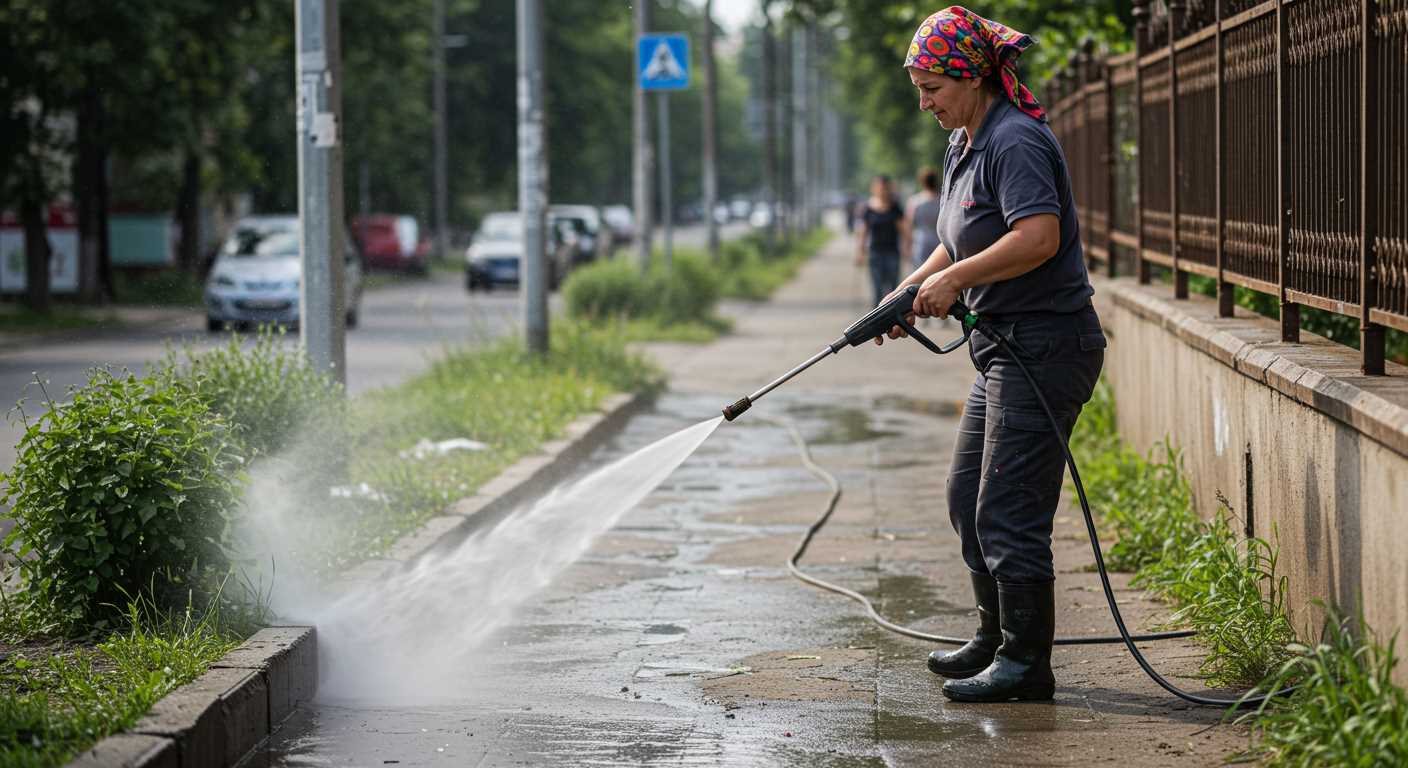
For effective eradication of unwanted plants, a model offering at least 130 bar of pressure is essential. This ensures sufficient force to dislodge roots and clean soil from crevices in your outdoor surfaces.
Opt for a unit with an adjustable nozzle. A variable spray pattern allows for flexibility, ensuring you can tailor the force according to the needs of different areas. A wider angle is useful for broad applications, while a narrower stream provides the intensity needed for stubborn clusters.
Consider electric models for residential use due to their convenience and lower maintenance requirements. However, if dealing with extensive areas, a fuel-powered variant can deliver more robust performance and long runtime without interruption.
In terms of accessories, a rotary cleaner attachment can enhance overall efficiency. This tool amalgamates high pressure and a circular motion, resulting in faster and more thorough cleaning.
Finally, ensure the warranty and customer support are robust. Choose manufacturers known for reliability, so your investment is protected. A solid build quality is just as important to withstand regular use while maintaining peak performance.
Step-by-step guide to utilizing a high-pressure cleaner on paved surfaces
Begin with preparing the area. Remove any large debris such as stones or branches to ensure a clear workspace. If the surface is particularly dirty, a pre-cleaning sweep with a broom or blower helps in maximising efficiency.
Equipment Setup
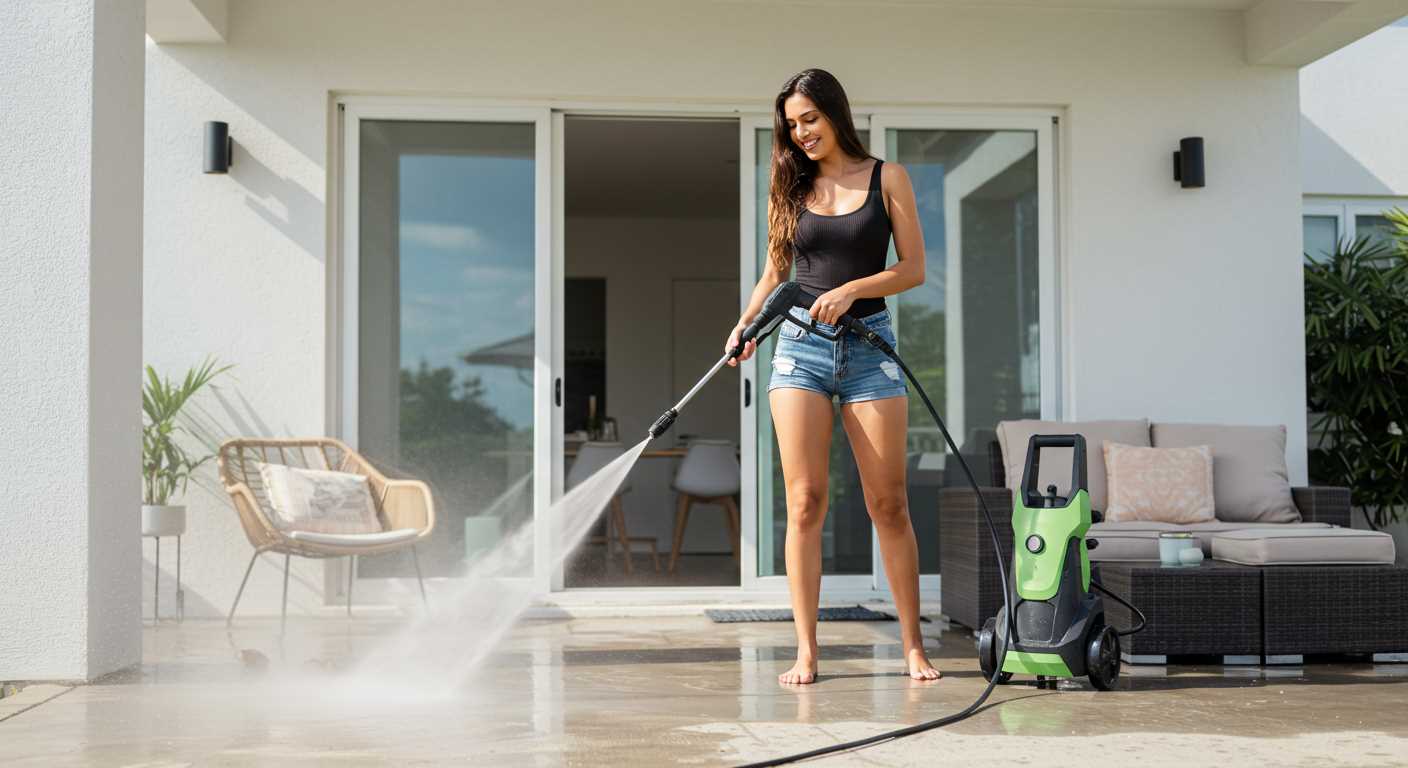
Attach the specified nozzle, typically a turbo or rotary one, designed to enhance the cleaning effect without damaging the surface. Ensure that all connections are secure, and check the water supply for adequate flow.
Cleaning Technique
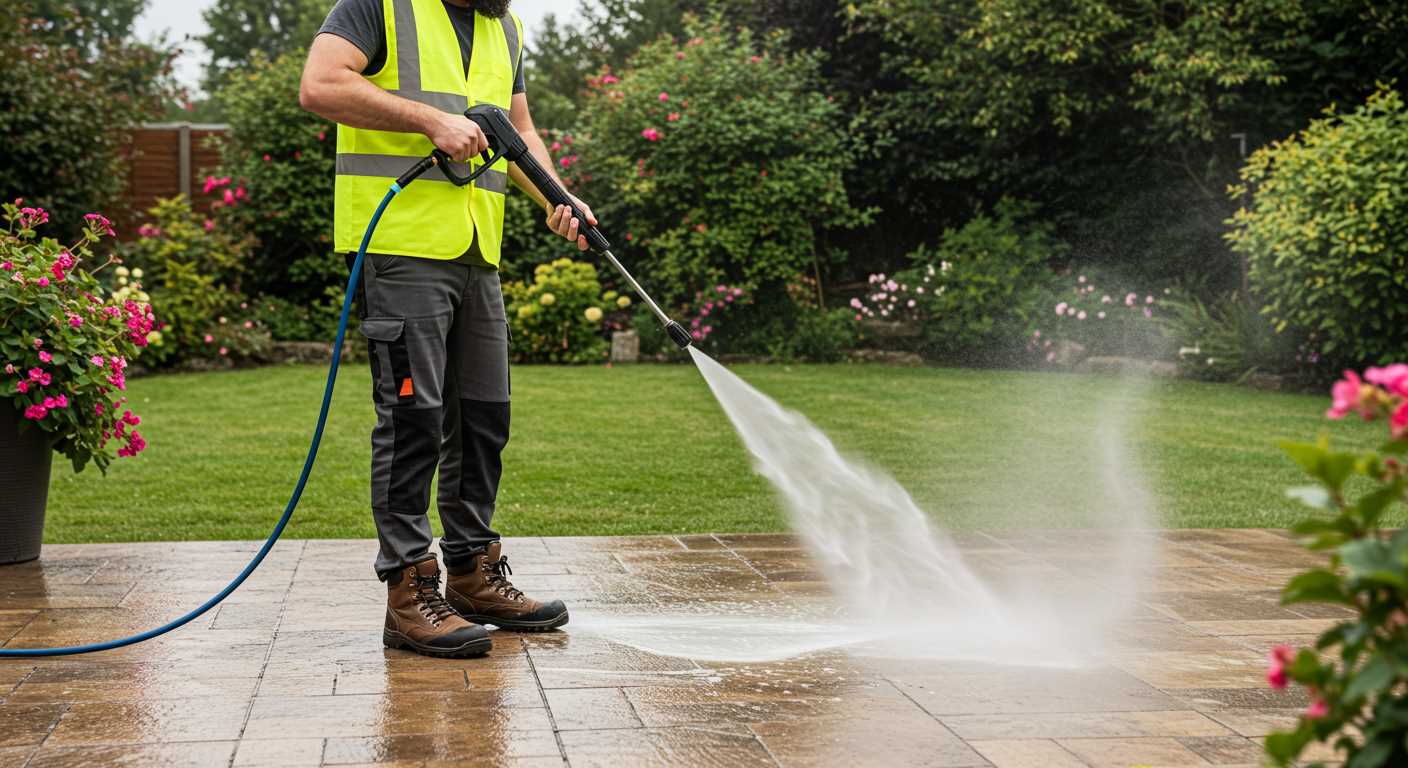
Position yourself about 30-40 cm away from the surface. Move the nozzle in a consistent sweeping motion, overlapping slightly with each pass to cover the area thoroughly. Maintain a steady pace to avoid etching or causing any surface damage. For stubborn patches, decrease the distance slightly and focus on problematic spots before rinsing the entire area.
| Step | Action |
|---|---|
| 1 | Clear the area of large debris |
| 2 | Attach the right nozzle |
| 3 | Begin cleaning at a distance of 30-40 cm |
| 4 | Sweep in a consistent motion |
| 5 | Focus on stubborn spots if necessary |
| 6 | Rinse the entire area |
After the procedure, inspect the surface for any remaining stubborn residues. Treat these specifically with either additional cleaning or manual scrubbing to ensure a thoroughly clean finish.
Common mistakes to avoid when pressure washing weeds
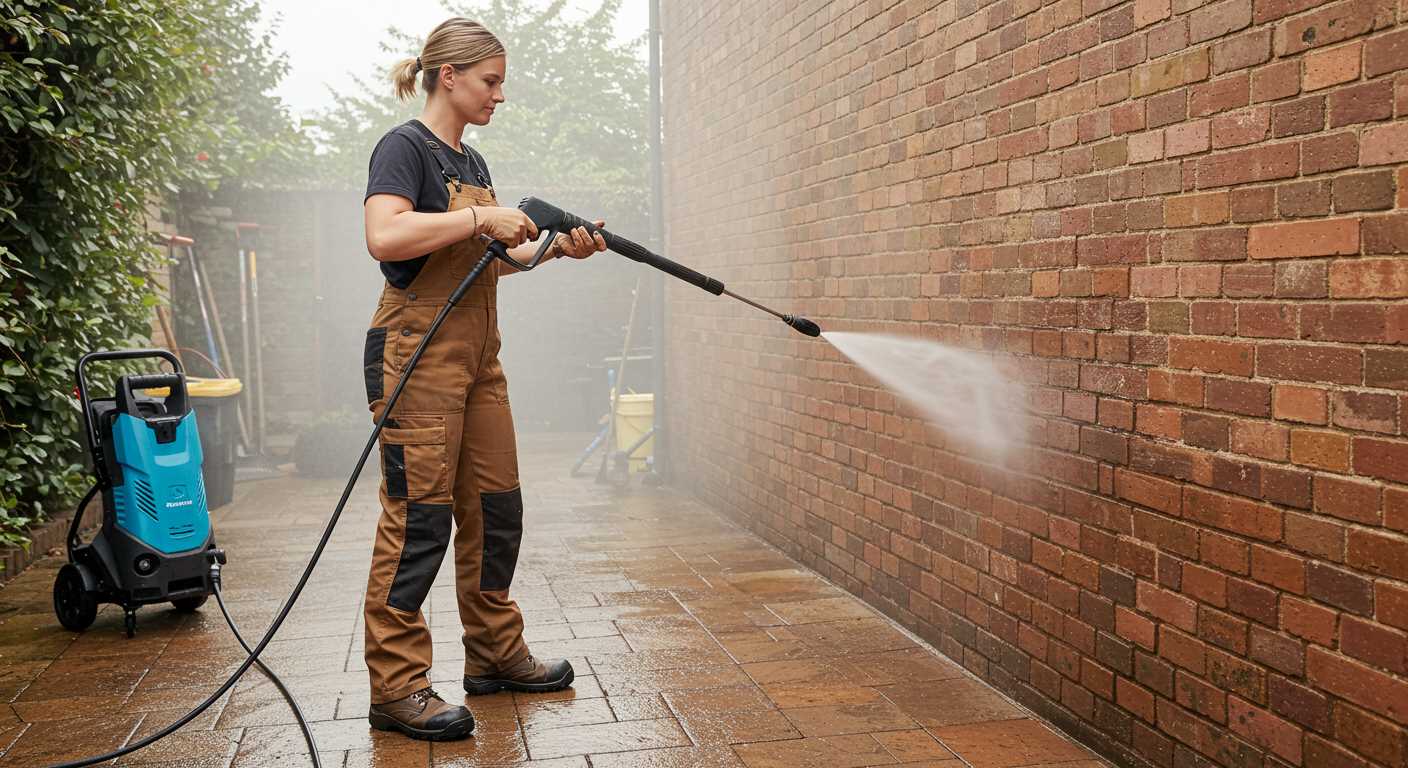
Avoid using excessive force. Many people think that increasing the intensity will yield better results, but it can damage surfaces and create gouges. Always start with the lowest setting and adjust as necessary.
Neglecting to prepare the area leads to inefficiencies. Clear debris, furniture, and obstacles from the working space to ensure an unobstructed clean-up. This saves time and effort.
Using an incorrect nozzle can be detrimental. Different nozzles deliver varying spray patterns. Opt for a wider spray for broad areas to avoid potential damage from a concentrated jet.
Focusing solely on the visible parts is a mistake. Weeds often have roots or remnants beneath the surface. Spend time ensuring roots are loosened and removed, or the problem may persist.
Failing to assess the weather conditions can result in suboptimal outcomes. Windy days can disperse dirt back onto freshly cleaned areas, while excessive rain may wash away your efforts too quickly.
Overlooking personal safety is critical. Always wear appropriate protective gear, such as goggles and sturdy shoes, to avoid injuries from flying particles or slips on wet surfaces.
Ignoring the importance of cleaning chemical application can hinder results. Utilising the right cleaners enhances efficiency. Make sure to follow the manufacturer’s guidelines for any chemicals to achieve the best outcome.
Finally, disregarding maintenance of your equipment can lead to subpar performance. Regularly check and clean the machine components to prolong its lifespan and ensure optimal functionality during use.
Alternative methods for weed elimination from block paving
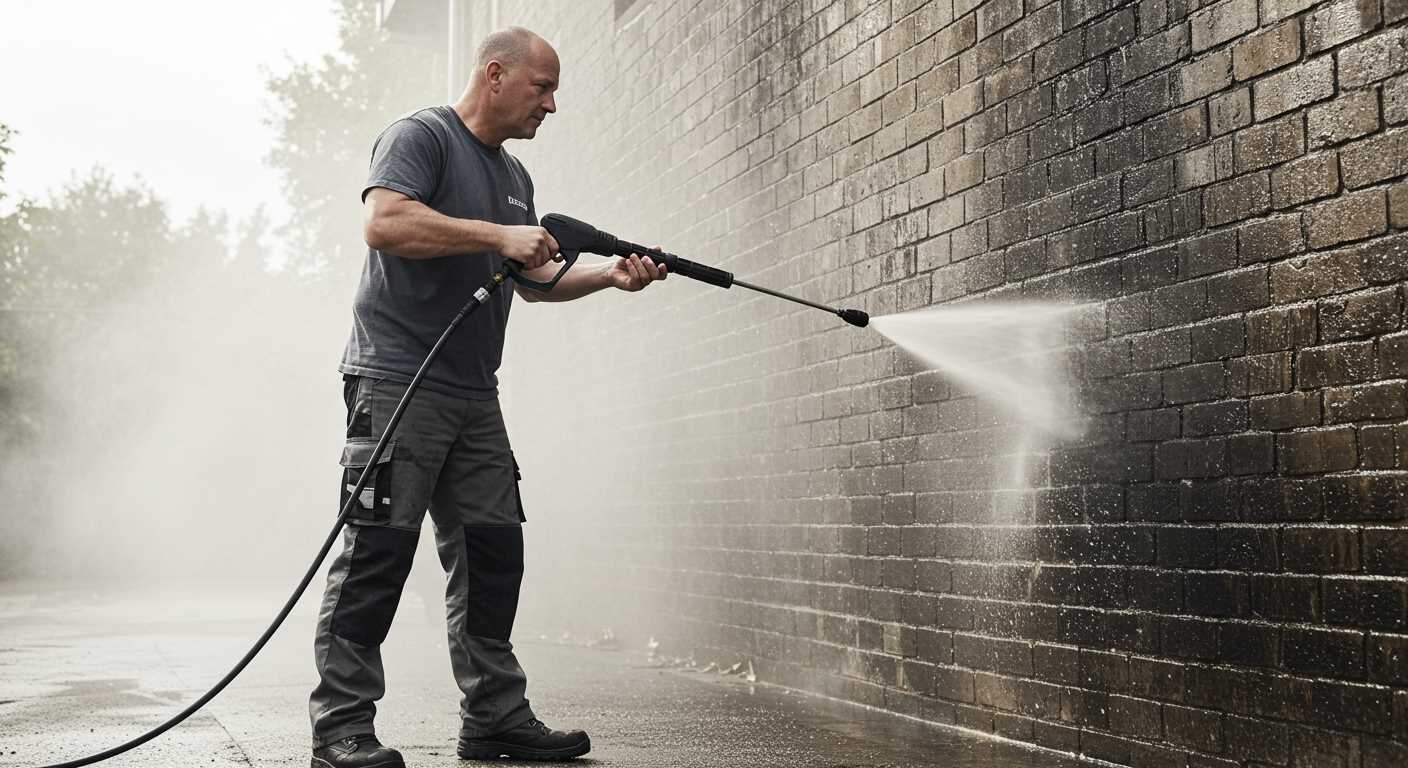
Using boiling water is one of the simplest options. Pour it directly onto the unwanted plants, targeting the root zone for maximum damage. This method is especially effective during sunny days, as the heat will penetrate the soil better.
Another approach involves using vinegar, which acts as a natural herbicide. Mix equal parts of vinegar and water in a spray bottle and apply generously to the foliage. The acetic acid will dehydrate the plant, causing it to wilt and die.
Consider employing a solution of salt and water as well. A strong concentration can effectively kill various types of vegetation. Be cautious when using this method, as salt can damage surrounding soil and hinder the growth of desirable plants.
Using a hoe or garden fork can be efficient for larger or more stubborn plants. Carefully dig around the base of the plants to uproot them, ensuring to remove as much of the root system as possible to prevent regrowth.
Mulching is preventative, not eliminative, but an excellent option to consider. By covering the paving with organic mulch, you can block sunlight and inhibit germination of any seeds. This strategy, combined with periodic maintenance, can minimise future growth.
Lastly, a steam cleaner can be an effective alternative. The high temperature of steam can eradicate unwanted growth without the need for harsh chemicals. Direct steam towards the base of the vegetation for best results.
Maintaining a Surface After Weed Extraction
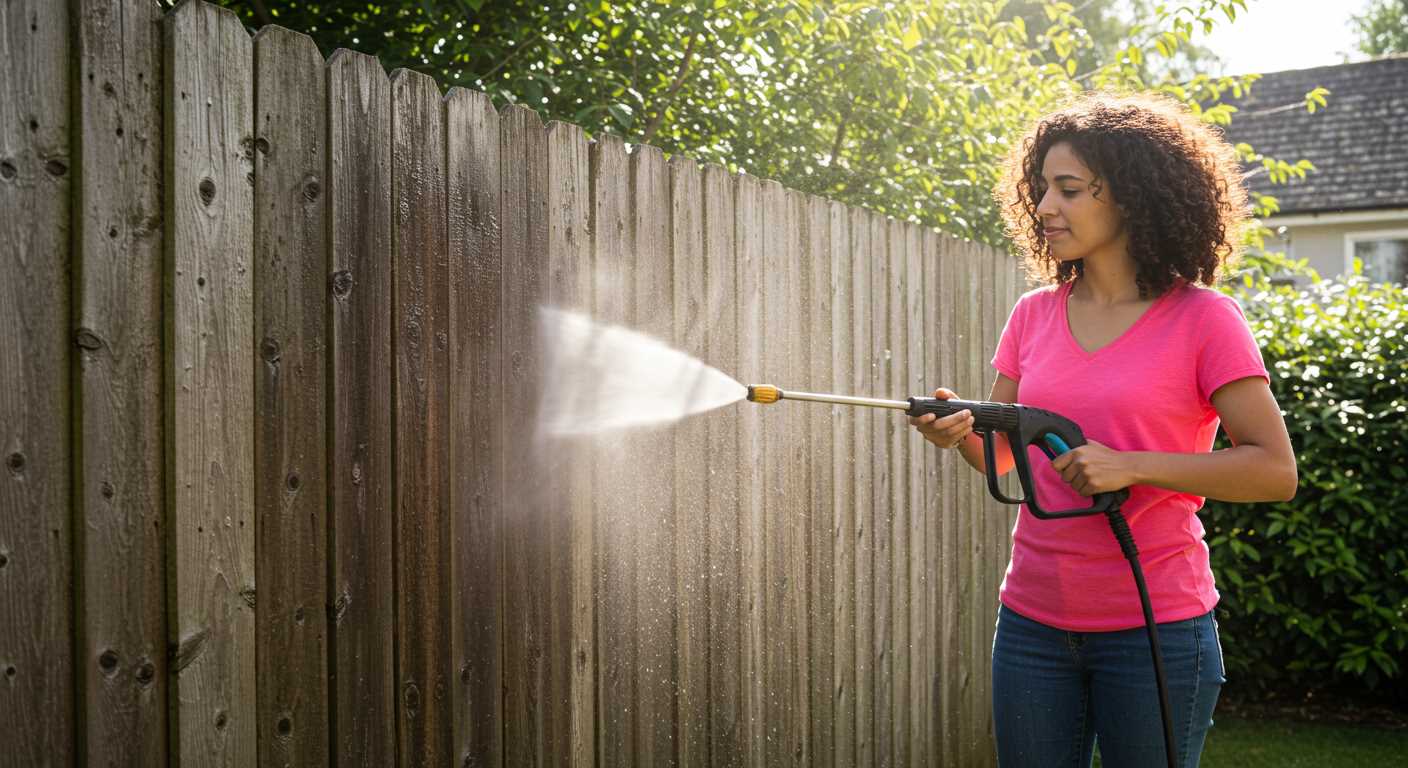
Regular upkeep post-extraction is crucial for longevity and aesthetics. To ensure that your paved area remains tidy and free from regrowth, follow these actionable steps:
- Inspect the Area: After clearing the vegetation, examine the joints and surfaces for any remaining roots or deposits that could encourage regrowth.
- Joint Filling: Fill the gaps between the stones with suitable jointing material. I recommend using kiln-dried sand or polymeric sand, which binds better and helps deter future growth.
- Seal the Surface: Applying a sealant can protect the surface and the joint lines. Select a high-quality sealant designed for your specific type of stone, which not only enhances appearance but also acts as a barrier against moisture and dirt.
- Regular Cleaning: Set a schedule for cleaning the surface, ideally every few months. Using a broom for loose debris and occasional washing will reduce the likelihood of plant growth.
- Monitor Water Drainage: Ensure that water flows away from the area. Improper drainage can create a damp environment, promoting growth.
- Weed Barrier Technologies: Consider installing landscape fabric under the surface or after initial cleaning, as it can prevent seeds from germinating in the future.
- Educate on Types of Weeds: Familiarise yourself with the local flora. Recognising unwanted species will help you address the issue before it becomes a problem.
By implementing these practices, not only will the area retain its charm, but it will also remain resilient against future botanical invasions.








